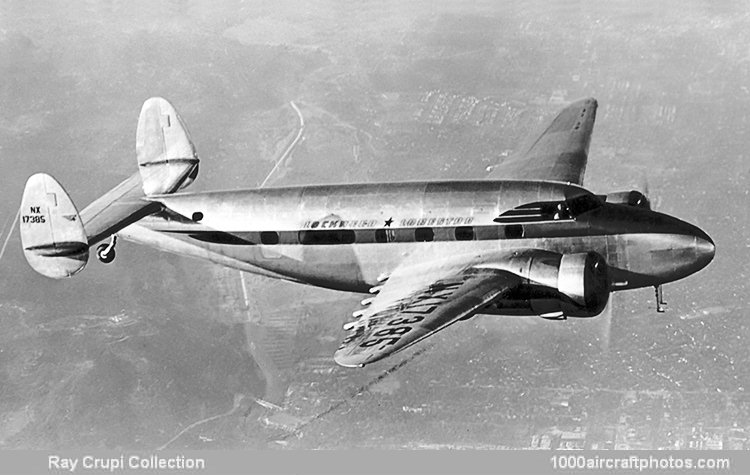08/31/2015. Remarks by Johan Visschedijk: "The somewhat disappointing debut of Lockheed's Model 14 in the United States, with Northwest Airlines disposing of its fleet during 1939, together with the high seat-mile cost of this aircraft, forced the company to seek out ways of improving its then largest transport. The redesign work was assigned to a team led by project engineer Jake Cowling and resulted in a length increase of 5 ft 6 in (1.68 m) to increase directional stability and allow two more rows of seats. As calculated performance and, more significantly, operating economics of the modified aircraft were promising, Lockheed decided to suspend production of the Model 14 in favor of the redesigned machine. At that time, even though this was only a minor modification of the Model 14, the aircraft was redesignated Model 18 and named Lodestar to divorce it in the public's mind from the unpopularity of the Super Electra.
As the production switch from Model 14 to Model 18 could not be accomplished immediately, the company decided to modify as a Model 18 prototype the fourth Super Electra (c/n 1404, NC17385) which it had taken back from Northwest. Assigned the c/n 1404A, later 18-1954, and the experimental registration NX17385, the modified aircraft retained the wing, tail surfaces and two 875 hp Pratt & Whitney Hornet S1E-Gs of the Model 14-H. It was first flown on September 21, 1939, by Marshall Headle and Louis Upshaw, and was soon followed by two other Model 14-H2s (c/ns 1483 and 1486) modified to the same standards as c/ns 18-1956 and 18-1957.
The first production Lodestar (c/n 18-2001, NX/NC25604), which like the three modified aircraft had its tail plane in the same position as that of the Super Electra, was first flown on February 2, 1940. Trials revealed that the Lodestar was prone to 'elevator nibble' which caused its controls to oscillate back and forth while the aircraft was in flight. Initial attempts at curing the problem by splitting the elevators and adding servo tabs failed to have the desired result. Partial improvement was achieved by raising the tail plane by 1 ft (30.5 cm), with ultimate solution being provided by the addition of a trailing edge extension to the wing. Together these modifications took the tail surfaces out of the wing turbulence and the Lodestar successfully completed its trial program to receive its TC on March 30, 1940. The type entered service in March 1940 with Mid-Continent Airlines."
